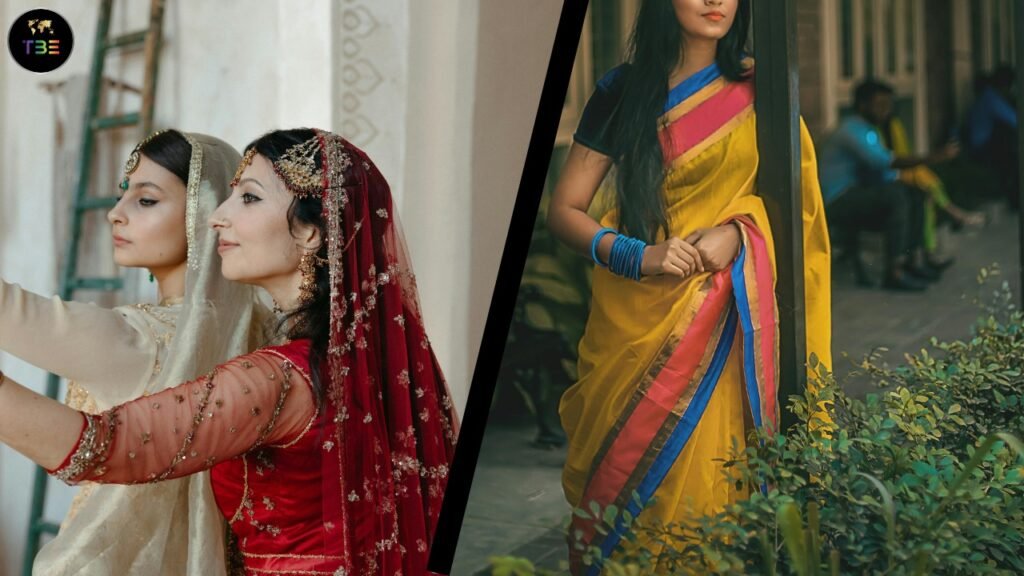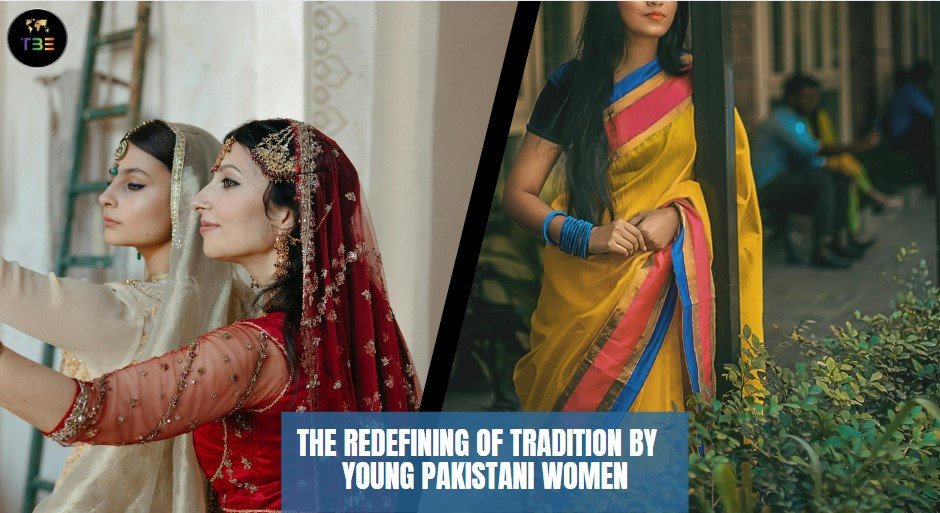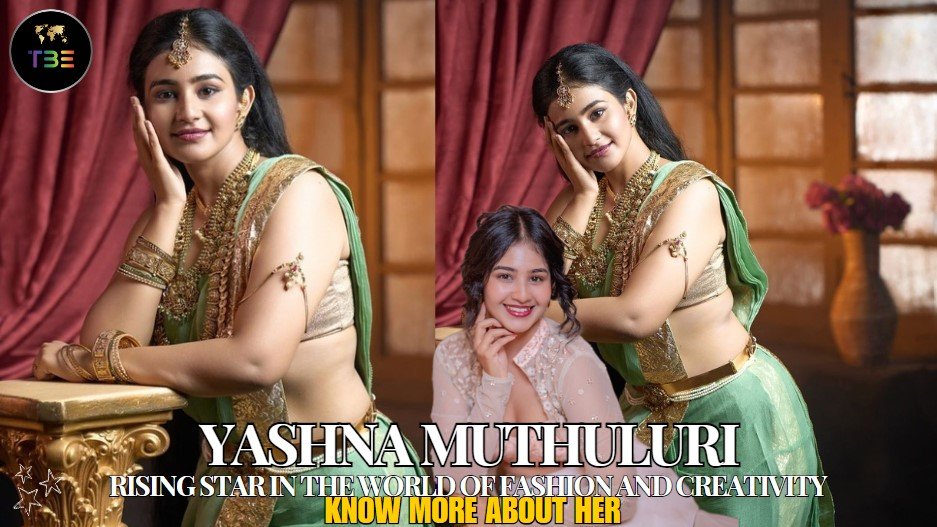
In recent times, the sari has come to represent empowerment for young Pakistani women. After being sidelined by social, political, and cultural views, a new generation of people who want to reinvent themselves while staying true to their roots have taken back the sari.
Ayesha Lari: Leading a Personal Sari Renaissance
Ayesha Lari, a 24-year-old native of Karachi, calls herself a fan of sari’s. As a replacement to the traditional shalwar kameez that most Pakistani women wear on holidays like Eid, Lari and her friends decided to accept the sari and drape it as a form of self-expression. Since she rediscovered an heirloom piece belonging to her late grandmother almost ten years ago, Lari has been passionate about sari’s. She has since defied social conventions that forbid women from wearing sari’s to events other than special occasions by making the item an important part of her closet.
Fashion, Politics, and Misconceptions in the Decline of the Sari
The sari was an important piece of clothing for the majority of the 20th century in many Pakistani middle-class and upper-class homes. Nonetheless, the attraction started decreasing in the 1980s due to shifting social conventions and fashion trends. Because of the Islamization of culture, the belief that the sari was unsuitable for Muslim women emerged under President General Zia-ul-Haq’s leadership. This was made worse by misconceptions about the sari’s appropriateness for modest clothing and the growing associations of the garment with India and Hindu culture.
When news reporters and government employees were banned from wearing the sari, its popularity in Pakistan began to decline. Over time, famous people who wore sari’s, such as Nusrat Bhutto, shifted to wearing the more “acceptable” shalwar kameez. That sari’s were not Islamic or even nationalistic obtained popularity as a result of this change.
Exposing Myths: The Sari as an Adaptable and Modest Clothing
One of the major misconceptions about the sari is that it naturally exposes the lower half, making it unsuitable in a conservative society. Fashion experts counter that there are many ways to style the sari that maintain its grace while enabling full coverage. A growing number of Pakistani women are questioning this narrative by experimenting with innovative draping methods that maintain modesty and the beauty of traditional clothing.
The sari has been negatively viewed in Pakistan due to the Indian media and pop culture’s grooming of it, which includes showing it as a sensational outfit in music videos and films. In spite of this, a lot of women are taking back the sari and dressing it as ways that express their cultural pride and personal values.
A Cultural Reclamation: Feminism, Identity, and Agency
In urban centers across Pakistan, young women are embracing the sari as a statement of self-empowerment. The garment, once sidelined by the mainstream, is now a symbol of defiance and agency. This is not just a fashion trend but a cultural movement. Social media campaigns like #Sarisforallsizes have gained traction, with influencers and fashion brands promoting body positivity and challenging traditional beauty standards.
This movement reflects a broader trend of women in Pakistan reclaiming public spaces and asserting their rights. With slogans like “my body, my choice,” the annual Aurat March (Women’s March) has established a forum for feminist discourse, of which the resurgence of the sari is a part. In this sense, fashion turns into a tool for social change.
Social Media’s Contribution to the Sari’s Comeback
The sari has become growing in popularity among young Pakistani women thanks in large part to social media. The revival of the sari has been supported by fashion bloggers like Sabah Bano Malik and online stores like The Saree Girl, who have featured the garment in their posts and removed common misconceptions about it. With more than 173,000 Instagram followers, The Saree Girl regularly works with Pakistani celebrities such as Mahira Khan and Hania Aamir, thereby highlighting the garment’s cultural significance and versatility.
Still, there have been some who opposed the movement. Malik was the target of fat-shaming in addition to remarks for wearing a “Hindu” garment while modeling a sari for a local brand. This backlash brings to light the pressures South Asian women, particularly those who challenge social norms, face on their bodies and cultures.
A Global Tradition: The Sari as a Family Heirloom
Sari’s continue to be a loved link to Indian ancestry for a large number of Pakistani families. Cultural heritage sari’s are still treasured and passed down through generations by families who came during the Partition of India and Pakistan, even though their marginalization in Pakistani society.
During Zia-ul-Haq’s reign, Miral Khwaja, the founder of the online sari brand Beenarasee, recalls how her family resisted social pressures. “While others were moving away from the sari, my family was busy expanding their collection,” Khwaja said. For many people, the sari represents resilience and the continuation of ancestral traditions and is more than just a clothing item.
Is It a Trend or a Revival?
Pakistan’s middle-class and upper-class women have certainly returned to wearing sari’s, but some contend that labeling this trend a “revival” ignores the interaction of class differences. Working-class Hindu women in Pakistan, as journalist Saba Imtiaz notes, never really lost the sari in their lives. Mostly restricted to urban, upper-class circles in cities such as Karachi, the current revival is more of a niche trend than a national cultural shift.
But it’s important that the sari is making a comeback in society. In terms of women’s agency, identity, and body autonomy in particular, it reflects broader societal shifts. The significance of sari’s in Pakistani culture may only grow as fashion trends develop, providing young women with a means of connecting with both their past and their future.
In Conclusion: The Sari as a Woman Empowerment Statement
Young Pakistani women are changing what it means to be a modern Pakistani woman, facing outdated concepts of modesty, and challenging social norms by reclaiming the sari. The return of the sari, whether as a nod to their heritage or a protest against feminism, is indicative of an ongoing trend that promotes self-expression, body positivity, and cultural pride.















Leave a Reply